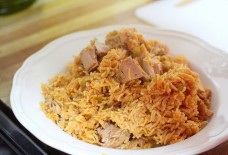Running after the Revolution
SOURCE: THE ARAB WEEKLY
BY: GORDON GRAY
During my tenure as the US ambassador to Tunisia, I witnessed history unfold first hand. On January 14, 2011, the people of Tunisia overthrew 23 years of despotic rule. Their revolution launched the Arab Spring uprisings that would engulf several other countries, including Libya, Egypt, Syria, Bahrain and Yemen.
In the days that followed in Tunisia, as I resumed my routine of running through Tunis to exercise and explore the community, I collected memories I will never forget.
I’ve been an avid runner for 25 years so when I arrived in Tunisia I was glad to discover that an active chapter of the Hash House Harriers — an international runners’ club — with local participants hailing from Tunisia, the United States and several other countries. Our runs took us all over the breathtaking capital city and its suburbs.
Sometimes we passed the Carthaginian ruins that survived Roman destruction. Often times we endured Tunis’s gruelling hills, which, legend says, reminded the ancient Romans of their own terrain. Other times we ran past the presidential palace, inhabited by strongman Zine el-Abidine Ben Ali and surrounded by his foreboding security guards.
The revolution that caused Ben Ali to flee Tunisia was far less violent than, say, the Iranian revolution or the chaos we sadly see today in Syria and Yemen. Still, shooting and looting — much of it targeting the ostentatious villas that Ben Ali’s relatives barely escaped from — plagued the country after his departure.
The result was that the dedicated staff at the US Embassy in Tunis — Americans and Tunisians alike — worked around the clock to answer inquiries from understandably concerned American citizens and to arrange safe passage for those who sought to leave the country.
Once the immediate crisis had passed and calm returned to the streets of Tunis, I strongly encouraged my staff to devote some quiet time to themselves, whether that meant reading a book, watching a movie or spending time with their families. In my case, it meant getting back to running through the picturesque streets of Tunis and its coastal suburbs.
The sights I saw during my runs were inspiring. Tanks were festooned with bouquets of flowers, the gifts of Tunisian citizens who wanted to show their appreciation for the military’s refusal to fire on civilians and its success in restoring order. I witnessed the formerly expressionless Praetorian guard at the presidential palace break into smiles.
Pedestrians seeing me run by would shout out “American?” and when I replied “Yes,” they would break out into broad smiles, grateful for early and clear support by US President Barack Obama and the US Congress for Tunisians and their democratic aspirations.
What struck me most of all, though, was how Tunisians flocked to cafes, determined to get back to the daily rhythms of their lives.
Plenty of American diplomats are runners like me but it was a rare opportunity to be able to run right after a democratic revolution and see for oneself people enjoying the fruits of their success.
I was very happy when I returned to Tunisia a few years after I had finished my tour as ambassador to see how the country had moved forward and, yes, to run once again along some of my favourite routes.



